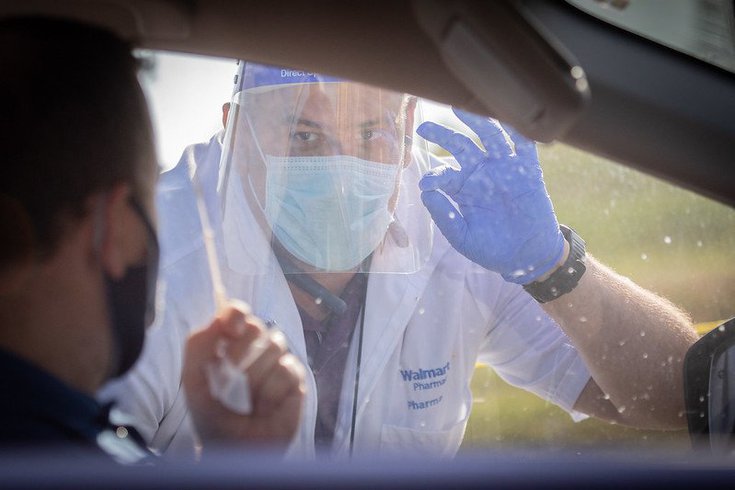
November 20, 2020
 Flickr/Gov. Tom Wolfe Office
Flickr/Gov. Tom Wolfe Office
Positivity rate refers to the percentage COVID-19 tests that come back positive. Above, a man gets tested at a COVID-19 testing site at the Walmart Supercenter in Elizabethville, Pennsylvania.
There are many statistics that have factored into decisions to tighten or loosen COVID-19 mitigation efforts during the ongoing pandemic.
Positivity rate has been one of the most common statistics referenced by public health officials as the coronavirus has surged to record levels this fall. Numerous states and cities, including Philadelphia, have cited their positivity rates as they've enacted a new wave of restrictions.
So what does this mean exactly?
Positivity rate refers to the percentage of all coronavirus tests that have come back positive. It offers a different perspective on transmission than simply looking at daily case totals.
The U.S. Centers for Disease Control and Prevention calculates positivity rate by dividing the number of positive tests by the number of total tests, and then multiplying that number by 100.
A higher positivity rate means that it doesn't take many tests to come across a positive one. Generally, a lower positivity rate is good, though it's just one piece of the puzzle.
Dr. Amesh Adaljia, a senior scholar at the Johns Hopkins Center for Health Security, used the analogy of hunting crayfish to explain positivity rate to CNN:
"If you were looking in a creek for crayfish, you find them by picking up rocks," Adaljia said. "You don't have to turn over a lot of rocks to find them if the rate is high."
But the positivity rate doesn't reveal the whole picture. That's because not everyone who has COVID-19 has been tested. And many people take multiple tests.
Currently, there is no specific agreement on how positivity rates should guide mitigation strategies.
In New York, anything above a 3% positivity rate forces schools to institute remote learning. In Iowa, 15% is the worrisome number. Still, most infectious diseases experts agree that a 10 to 15% positivity rate or higher is a cause of concern.
Positivity rate, however, is just one of several ways public health officials try to determine how widespread the coronavirus is in their communities. The number of overall cases, hospitalizations and deaths are also weighed carefully.
Philadelphia recorded an 11.7% positivity rate last week – a record high. Other statistics, including tests conducted and daily cases, reached all-time highs too, suggesting increasing rates of transmission.
Worries over hospital capacity also contributed to the city's decision to tighten COVID-19 restrictions for the remainder of the year.
People who live in areas where these factors point to an increased risk of transmission should follow all mitigation strategies carefully to protect themselves and others, health experts say.